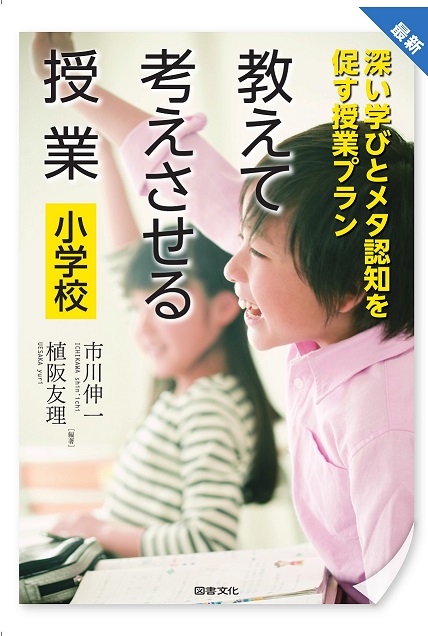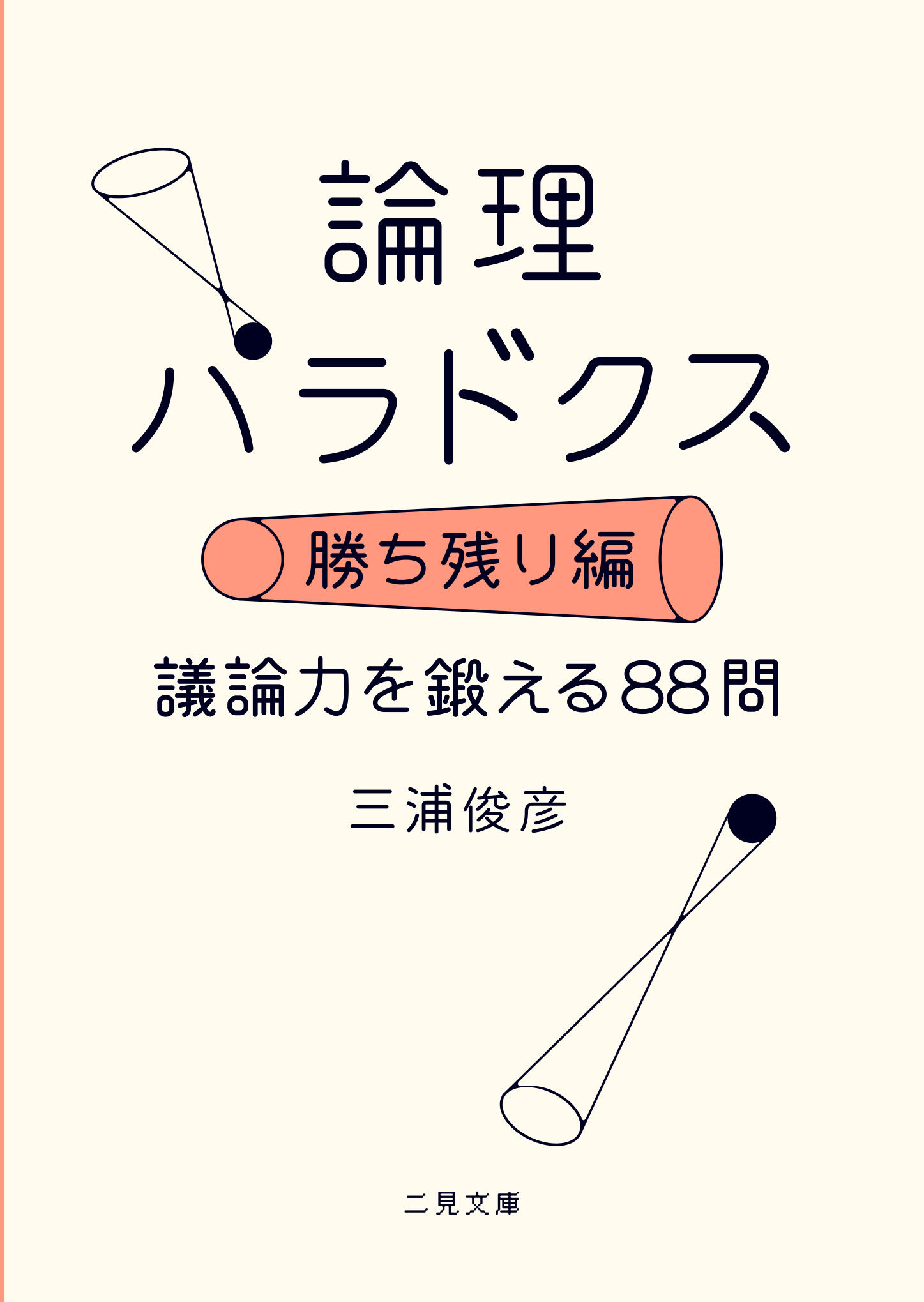
Title
Tensaiji no tame no ronri shiko nyumon (An Introduction to Logical Thinking for Gifted Children)
Size
192 pages, A5 format
Language
Japanese
Released
June 12, 2015
ISBN
978-4-309-24713-7
Published by
Kawade Shobo Shinsha
Book Info
See Book Availability at Library
Japanese Page
When I was a student, ideas like “lateral thinking” and “right-brain thinking” were in fashion. I suppose people had the strong impression that a flexible approach to thinking—in which insights can be achieved through images, associations, and inspiration—was more promising than thinking everything through in a rigid, logical way. But then, suddenly it appeared that left-brain thinking had reached the peak of its popularity. More stress was placed on backing up one’s argument with logical reasons, on thinking founded on logic, on the definition of concepts, on the structure of theses, and on the rules of inference. Logical debating skills, which follow rules common to all of these approaches, were called for over right-brain thinking, with its reliance on ill-defined mental stirrings such as hunches and images. This might have been a reflection of the times—a stiffer and more stifling age, oriented toward the reliable and the safe. And yet, the transition to a more logical approach to thinking may have had its roots elsewhere—in a growing realization that the logical approach is the fair and unassuming attitude and that in the long run, it makes better use of individuals’ inspirations.
This book, An Introduction to Thinking for Gifted Children, is a work on critical thinking written through the left-brain approach. Nevertheless, the material bears a deep “right-brain” imprint. This is because the concept for this book is “how to answer children’s (simple) questions.” When I was working as a script editor on the TBS drama Edison’s Mother (2008), I used to write a weekly commentary on the program’s home page, and the book is based on that material.
The drama was set in a first grade classroom. A boisterous new kid joins the class, where he torments his inexperienced female teacher and disrupts the entire class with his interminable questions. The show was all about what happens when adults try their best to give logical answers to a child’s capricious questions, and it forms the subject matter of this book. The questions featured in the show included everything from problems of logic like “Why does one plus one equal two?” to natural science topics such as the rainbow, electricity, and the theory of continental drift to questions related to the arts and ethics, such as “Why are there good pictures and bad pictures?” and “Should children be prohibited from reading tales of cruelty?” The book is written in a question-and-answer style, and adult readers, who may be mercilessly bombarded with a barrage of children’s questions overflowing with curiosity, are prompted to think out the answers for themselves. To help readers maintain their self-awareness, I have included some slightly philosophical devices, such as classifying the answers into categories like “About physics,” “Normative,” and “Ask another question in reply.”
In the period when the drama was broadcast, it generated a tremendous reaction on the Internet, especially in the comments section on the program’s website. Some of the comments were about problems of logic, which was my area of responsibility. I have tried to incorporate these comments into this book as much as possible. I have discussed particularly severe criticism in the comments in the “Conclusion” (Afterword). I cannot say I am sure that I convinced any of my critics though.
A month after this book was published, I received a translation offer from Taiwan. This Traditional Chinese-language version came out in January 2017. The publisher, Human Thesaurus Publishing Group, has an especially strong track record in children’s books, so I am really happy to see the translation’s cover and design.
(Written by MIURA Toshihiko, Professor, Graduate School of Humanities and Sociology)



 Find a book
Find a book






